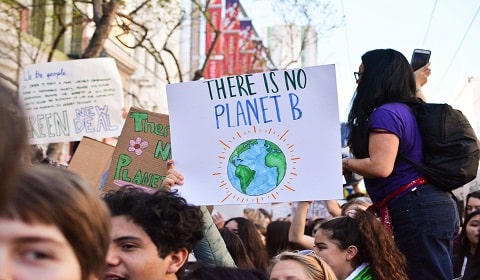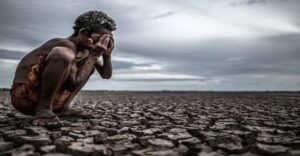
Climate-friendly Investments in Developing Countries
Climate-friendly investments in developing countries play a significant role in fostering sustainable development and mitigating the adverse impacts of climate change. As the global community grapples with the urgent need to address environmental challenges, directing financial resources towards initiatives that promote clean energy, biodiversity conservation, and climate resilience in developing nations becomes imperative.
These investments not only contribute to the reduction of greenhouse gas emissions but also stimulate economic growth, enhance social well-being, and create resilient communities in regions that are particularly vulnerable to the effects of climate change.
In this context, exploring and supporting climate-friendly investments in developing countries emerges as a critical strategy for building a more sustainable and equitable future for the planet.
Table of Contents
Climate-friendly Investments in Developing Countries
In the aftermath of the challenges faced by developing economies in 2023, the year ahead poses even greater hurdles for nations grappling with mounting debts and liquidity constraints. While many of these economies may not be on the brink of insolvency, the pressing need for liquidity threatens their ability to manage debts and invest in critical areas like the green transition, including climate-friendly investments in developing countries.
This article explores the multifaceted issues faced by developing economies, the looming debt wall in 2024 and 2026, and proposes a comprehensive solution in the form of a “liquidity bridge” to safeguard both economic stability and climate action.
1. The Dual Struggle of Developing Economies
Developing economies grapple with a string of external shocks, from the COVID-19 pandemic and conflicts disrupting food and energy supply chains to a surge in global inflation. These challenges constrict access to capital markets, compelling nations to allocate substantial revenues to debt servicing. This diversion hampers essential areas like infrastructure, social-welfare programs, and climate action.
Climate-friendly investments in developing countries become particularly challenging, intensifying the multifaceted difficulties these nations confront. The compounding impact of these adversities underscores the urgent need for comprehensive solutions to bolster economic resilience and address the pressing issues facing developing economies.
2. The Looming Debt Wall
In 2024 and 2026, Finance for Development Lab (FDL) projections foresee substantial debt payments impacting over 20 low- and lower-middle-income nations. This impending financial strain intensifies existing fragilities in their fiscal positions.
As these countries approach the critical “debt wall,” anxieties rise regarding their capability to fulfill financial commitments, posing a heightened threat to their ability to pursue sustainable and climate-friendly investments in developing countries.
The looming debt crisis underscores the urgent need for comprehensive strategies to alleviate the economic burden and fortify these nations’ resilience in navigating complex financial challenges.
3. Climate Action in Peril
In the backdrop of economic challenges in developing nations, climate change poses a formidable threat. Despite experiencing its impacts, these vulnerable countries grapple with financial constraints hindering effective response.
Disparities in climate financing commitments between developed and developing economies are evident in international summits, reflecting the struggle for resources. Frustration surfaced prominently during the Summit for a New Global Financing Pact in Paris, underscoring the urgency to bridge the financial divide for collective climate action.
Amidst this, the importance of climate-friendly investments in developing countries becomes increasingly apparent, offering a pathway to sustainable development and resilience. As developing economies face fiscal limitations, addressing climate change becomes a critical imperative in fostering global sustainability and resilience.
4. Multilateral Development Banks: A Critical Lifeline
Multilateral Development Banks (MDBs) play a crucial role in supporting global economic development, yet their capacity requires immediate enhancement. World Bank statistics highlight a concerning trend in 2022, where concessional loans to the world’s poorest nations were insufficient, trailing behind their debt-service obligations.
A substantial portion of these funds also diverted to private and bilateral creditors. Amidst escalating capital flight from developing nations, the urgency for robust assistance in financially strained, lower-income countries intensifies.
This is particularly crucial in the context of climate-friendly investments in developing countries, underscoring the imperative need for fortified MDB capabilities to address the evolving challenges in the global economic and environmental landscape.
5. Crafting a Sustainable Solution
A proposed solution to bridge the gap between short-term debt concerns and long-term investment needs involves an agreement among debtors, creditors, and MDBs. The Finance for Development Lab suggests a debt rescheduling plan, allowing countries to delay debt maturities by 5-10 years.
This would create fiscal space for climate-friendly investments in developing countries, facilitated by increased funding from MDBs and debt-rollover risk management by the International Monetary Fund (IMF).
Encouragingly, this plan includes stronger incentives for private-sector creditors to participate and longer time horizons compared to previous initiatives.
Bottom Line
As the G20 summit approaches in Brazil, the international community faces a critical task in shaping a blueprint for the proposed liquidity bridge, with a particular emphasis on climate-friendly investments in developing countries.
Logistical and financial coordination will be essential to ensure sufficient liquidity, while collaboration among the IMF, World Bank, and regional development banks will be crucial to guide debtor countries towards investments supporting green growth.
Without intervention, the world risks a destabilizing wave of debt defaults, jeopardizing progress on the green transition with global implications. Embracing solutions like the liquidity bridge is imperative for a sustainable and resilient future.






How do external shocks, such as the COVID-19 pandemic, conflicts affecting supply chains, and a global inflation surge, impede the development of climate-friendly investments in developing economies, and what comprehensive solutions are urgently needed to enhance economic resilience and address the critical challenges these nations are currently facing?